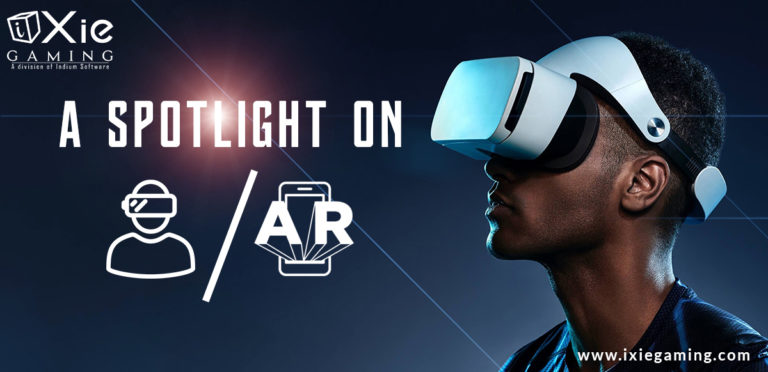Remember the first time you entered the world of Hyrule in “The Legend of Zelda: Breath of the Wild”? Or the moment you met the charming characters in “Animal Crossing”? These memorable experiences are thanks to the amazing power of game art production. From stunning landscapes to unforgettable character designs, game art shapes how we connect with our favorite games. In this article, we’ll explore how game art affects player experience and engagement, revealing the magic behind the visuals that keep us coming back for more.
Understanding the Power of Game Art Production
The visual gaming environment plays a big role in how players interact with your game. That’s where game art production helps. It lets you create beautiful gaming environments that connect with players and catch their attention. The result? More player engagement and a better gaming experience.
But how does game art production impact the visual gaming environment? Here are two ways it does:
Creating Immersive Gaming Worlds
Game art has the power to take players to amazing worlds that create strong feelings.
With careful environment design, game artists can make beautiful landscapes, from peaceful gardens and calm natural scenes to busy cities and futuristic places. The detailed work in these digital worlds makes them feel real, pulling players into the game and making them feel like they are part of the adventure.
But game art isn’t always the same; it keeps changing. Every new game brings different artistic styles, from lifelike graphics to the charming look of old-school pixel art. These changing art styles affect how much players enjoy and understand the game. Creative techniques like canvas textures and cell shading can help your game stand out, leaving a memorable impression on players and keeping your game popular in the competitive gaming world.

Setting the Scene and Mood
The game art of your video game sets the scene and mood for players during their journey. For example, using lighting effects, environmental storytelling, and color choices helps game artists create different emotions, like peace, mystery, and excitement. So, carefully designing game art can greatly impact how players feel about your game.
The Impact of Game Art on Gameplay Feedback
The game art of your video game sets the scene and mood for players during their journey. For example, using lighting effects, environmental storytelling, and color choices helps game artists create different emotions, like peace, mystery, and excitement. So, carefully designing game art can greatly impact how players feel about your game.
1. Immersive Effects and Animation
Computer effects and animations are important parts of game art that make the player’s experience better and more engaging. By creating visually appealing effects, realistic physics, and smooth character movements, game artists can draw players into the virtual world. Focusing on details in these game environments makes the interactions feel more real, making the game more enjoyable and immersive. This leads to positive feedback from players.
2. Visual Indicators and Cues
Creating game art is more than just making things look good. It also helps give players important information. Game artists use visuals to guide players, show how game mechanics work, and provide feedback. For example, they might use color-coded signals to show characters’ health or design paths that lead players to their goals. Clear and user-friendly game art helps players understand the game better, making the experience more enjoyable and engaging.
3. Interactive Components and Environmental Clues
Did you know that you can use game art to provide ecological hints? Well, carefully crafted video game art includes environmental clues and other active factors that promote analytics and expedition. Game artists can leverage visual signs to highlight things of interest, top-secret areas, or hidden paths, encouraging players to explore and unearth new information.
Game artists can reward players’ curiosity with visually appealing rewards and narrative development. As a result, they leverage game art to incentivize expeditions and improve the gamer’s overall experience.

Character Evolution and Personalization
Since game art production is about creating aesthetic components, character designs are no exception. Here are several reasons why character designs are so crucial in enhancing player experience:
1. Emotional Connection
Game art can easily trigger a strong emotional connection between gamers and the personalities they handle through character designs. For instance, artistic imitations of gestures, faces, and computer effects can convey a series of feelings. This enables players to empathize with the online characters or avatars they manage. This emotional connection strengthens the player’s investment in the game’s story, improving their overall gaming experience.
2. The Power of Visual Identity
Outstanding character designs are at the core of many effective video games. In fact, some character layouts have become cultural symbols in the gaming world thanks to their enduring appeal and exquisite allure. Whether it’s unique silhouettes, costumes, or even expressive face elements, carefully curated characters have the power to leave a long-lasting impact on players. Also, they have the potential to become cherished icons in the gaming world.
3. Character Personalization and Progression
Game art plays a key role in character customization and progression. As players progress through the game, they unlock new tools, visual upgrades, and abilities for their characters. These graphical enhancements provide a sense of achievement and allow players to personalize their in-game personas, fostering a stronger sense of attachment and ownership. The result is increased player engagement and a more enjoyable gaming experience.
Final Thoughts
Game art production isn’t just about pretty pictures – it’s the heart and soul of unforgettable gaming experiences. The magic blend of captivating visuals, immersive environments, and characters that resonate on a deep level is what transforms a game from good to legendary.
But we want to hear from YOU! What are some of the most stunning, memorable, or downright jaw-dropping examples of game art you’ve encountered? How has art and design shaped your favorite gaming experiences? Share your thoughts and let’s spark a conversation about the incredible power of game art.
And if you’re ready to take your own game to the next level, our team of expert artists and designers is here to help you craft a visual masterpiece that will captivate players and leave a lasting impression. Don’t settle for the ordinary – let’s create something extraordinary together!
FAQ’s
A: Game art production is the process of creating visual elements for a video game, including characters, environments, animations, and special effects. It involves using various artistic techniques and software to bring the game’s visual world to life, enhancing the overall player experience.
A: Game art production affects player engagement by creating visually appealing and immersive environments that capture players’ attention and draw them into the game. Well-designed art can evoke emotions, convey the game’s story, and make the gameplay experience more enjoyable and memorable.
A: Lighting effects and environmental storytelling play a crucial role in setting the mood and atmosphere of a game. For example, dark, shadowy lighting can create a sense of mystery or tension, while bright, vibrant colors can evoke feelings of joy and excitement. These elements help shape players’ emotional responses to the game.
A: Computer effects and animations enhance the visual appeal and realism of a game. They include special effects like explosions, weather changes, and character movements. High-quality animations and effects make interactions within the game more believable and engaging, improving the overall player experience.






